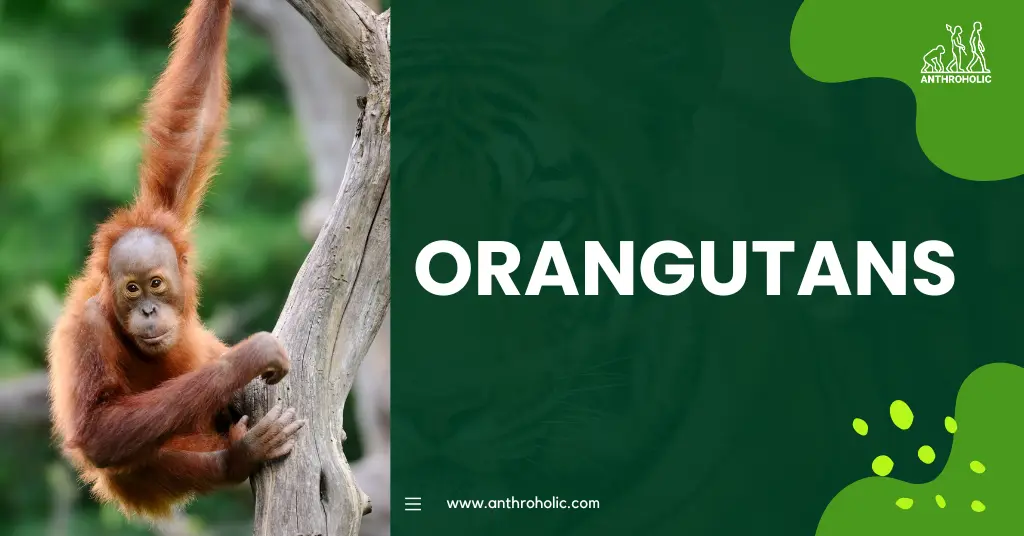AI Answer Evaluation Platform Live Now. Try Free Answer Evaluation Now
Orangutans
Orangutans, known for their distinctive red fur and intelligent behavior, are among the most fascinating primates on earth. These great apes are primarily found in the rainforests of Borneo and Sumatra, providing a unique perspective into primate behavior and evolution.

Habitat and Distribution
Orangutans are the only great apes that are native to Asia, specifically in Borneo and Sumatra’s tropical rainforests. The forests are characterised by an abundance of fruit-bearing trees which serve as the primary food source for these apes [1].
Types of Orangutans
There are three species of orangutans:
- Bornean Orangutan (Pongo pygmaeus)
- Sumatran Orangutan (Pongo abelii)
- Tapanuli Orangutan (Pongo tapanuliensis)
Each species is adapted to its specific habitat and exhibits subtle variations in behavior, diet, and physical characteristics.
| Species | Population (2022 estimate) | IUCN Conservation Status |
|---|---|---|
| Bornean Orangutan | 104,700 | Critically Endangered |
| Sumatran Orangutan | 13,500 | Critically Endangered |
| Tapanuli Orangutan | 800 | Critically Endangered [2] |
Social Structure and Behavior
Orangutans are semi-solitary animals, unlike other great apes that tend to live in social groups. Adult males live primarily alone, while females live with their dependent offspring. Males and females interact primarily for mating purposes [3].
Communication and Learning
Orangutans have a variety of communication methods:
- Vocalizations: These can range from calls to attract mates to alarm calls warning of predators.
- Visual signals: Facial expressions and gestures are used to communicate various messages.
- Tactile communication: Physical contact, primarily between mothers and their offspring.
These apes also demonstrate incredible learning abilities. Young orangutans learn essential survival skills from their mothers during an extended period of infant care, which lasts for approximately seven to nine years.
Diet and Foraging Behavior
Orangutans are predominantly frugivores, meaning that their diet consists mainly of fruit. However, they also consume leaves, bark, insects, and, on rare occasions, small vertebrates.
- The primary food source: Fruits (especially durians, figs, and lychees)
- Secondary food source: Leaves, bark, flowers, and insects
- Occasionally, they also eat bird eggs and small vertebrates.
Orangutans have been observed to use simple tools for foraging, demonstrating their intelligence and problem-solving skills.
Orangutan Lifespan and Reproduction
Orangutans have a long lifespan, similar to that of humans. They have been known to live for more than 50 years in the wild. Males become sexually mature at around 15 years of age, but they might not be able to breed until they fully develop their secondary sexual characteristics, which usually happens when they reach their late teens or early twenties.
Females, on the other hand, reach sexual maturity around 12 years of age, with the first birth typically taking place around 15 years. The interbirth interval among orangutans is the longest known among mammals, usually spanning between seven to nine years.
Reproductive Behavior
Orangutan reproduction is marked by notable behaviors:
- Long Calls: Males make loud vocalizations known as long calls to attract females and deter rival males.
- Forced Copulations: Males occasionally resort to forced copulations, typically younger, less dominant individuals.
- Consortships: A male and a female orangutan form temporary bonds, referred to as consortships, during the mating period.
Cognitive Abilities and Culture
Orangutans are highly intelligent creatures known for their problem-solving skills and ability to use and manufacture tools. Their tool usage includes using sticks to extract insects or honey from trees and using large leaves as umbrellas during heavy rain.
Research indicates that different populations of orangutans have distinctive sets of behaviors, which is seen as evidence of culture. Such cultural variations include different tool use, feeding habits, and communication gestures.
Threats and Conservation
Orangutans face a series of threats, primarily from human activities:
- Habitat loss: This is mainly due to deforestation for palm oil plantations, logging, and human settlement expansion.
- Illegal pet trade: Baby orangutans are often captured for the pet trade, which usually involves killing the mother.
- Hunting: Some local communities hunt orangutans for meat or to protect crops.
Due to these threats, all three orangutan species are classified as critically endangered by the IUCN. Conservation efforts are ongoing and include habitat preservation, rehabilitation and release programs, and education about the importance of orangutans to the ecosystem and biodiversity.
Conclusion
Orangutans are fascinating creatures that offer unique insights into primate behavior, intelligence, and evolution. However, these great apes are under severe threat, primarily due to human activities. Continued conservation efforts are vital to ensure the survival of these intelligent primates, the red apes of the rainforests.
References:
[1] Wich, S., et al. (2018). “The future of orangutans in Borneo.” Current Biology, 28(5), R147-R148.
[2] Singleton, I., et al. (2018). “Pongo tapanuliensis.” The IUCN Red List of Threatened Species 2018.
[3] Mitra Setia, T., et al. (2009). “Social organization and male–female relationships.” Orangutans: Geographic Variation in Behavioral Ecology and Conservation.




